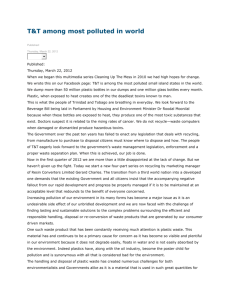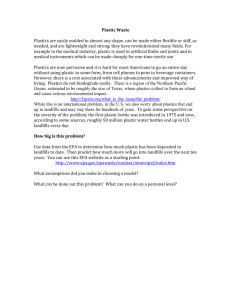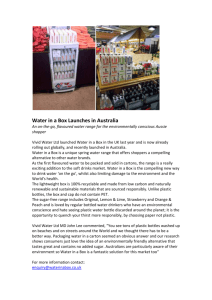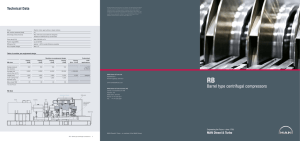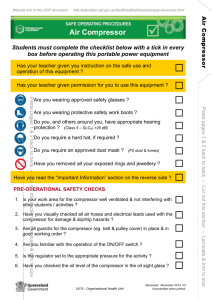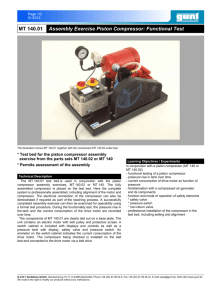What is the function? The function of the casing is to hold all of the
advertisement
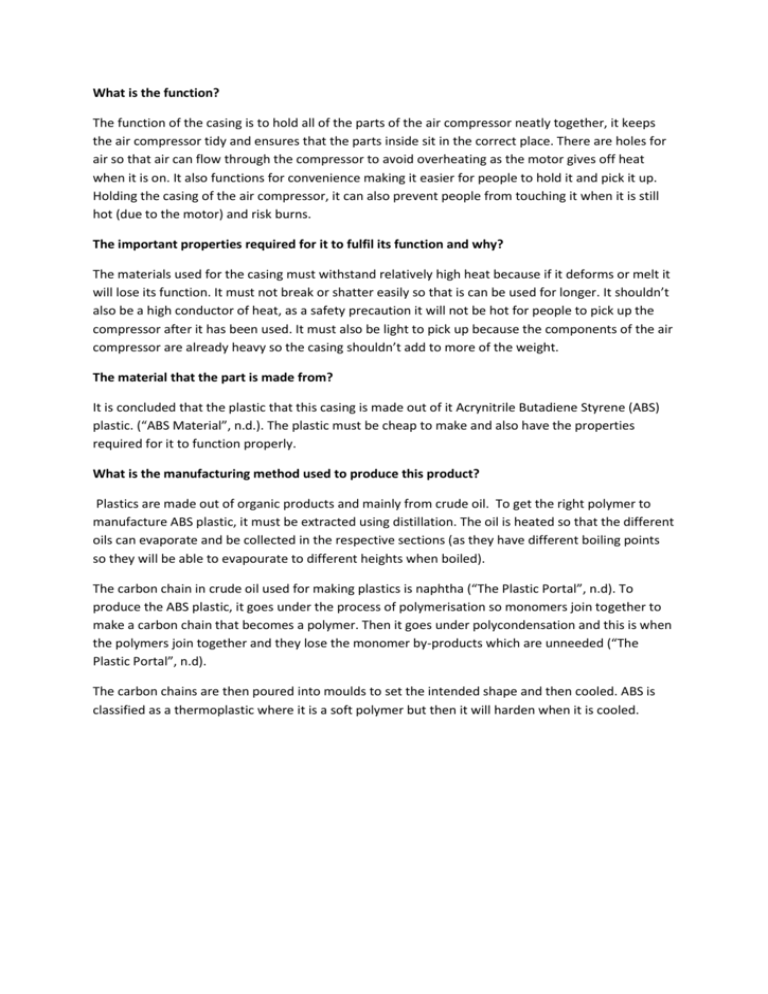
What is the function? The function of the casing is to hold all of the parts of the air compressor neatly together, it keeps the air compressor tidy and ensures that the parts inside sit in the correct place. There are holes for air so that air can flow through the compressor to avoid overheating as the motor gives off heat when it is on. It also functions for convenience making it easier for people to hold it and pick it up. Holding the casing of the air compressor, it can also prevent people from touching it when it is still hot (due to the motor) and risk burns. The important properties required for it to fulfil its function and why? The materials used for the casing must withstand relatively high heat because if it deforms or melt it will lose its function. It must not break or shatter easily so that is can be used for longer. It shouldn’t also be a high conductor of heat, as a safety precaution it will not be hot for people to pick up the compressor after it has been used. It must also be light to pick up because the components of the air compressor are already heavy so the casing shouldn’t add to more of the weight. The material that the part is made from? It is concluded that the plastic that this casing is made out of it Acrynitrile Butadiene Styrene (ABS) plastic. (“ABS Material”, n.d.). The plastic must be cheap to make and also have the properties required for it to function properly. What is the manufacturing method used to produce this product? Plastics are made out of organic products and mainly from crude oil. To get the right polymer to manufacture ABS plastic, it must be extracted using distillation. The oil is heated so that the different oils can evaporate and be collected in the respective sections (as they have different boiling points so they will be able to evapourate to different heights when boiled). The carbon chain in crude oil used for making plastics is naphtha (“The Plastic Portal”, n.d). To produce the ABS plastic, it goes under the process of polymerisation so monomers join together to make a carbon chain that becomes a polymer. Then it goes under polycondensation and this is when the polymers join together and they lose the monomer by-products which are unneeded (“The Plastic Portal”, n.d). The carbon chains are then poured into moulds to set the intended shape and then cooled. ABS is classified as a thermoplastic where it is a soft polymer but then it will harden when it is cooled.




